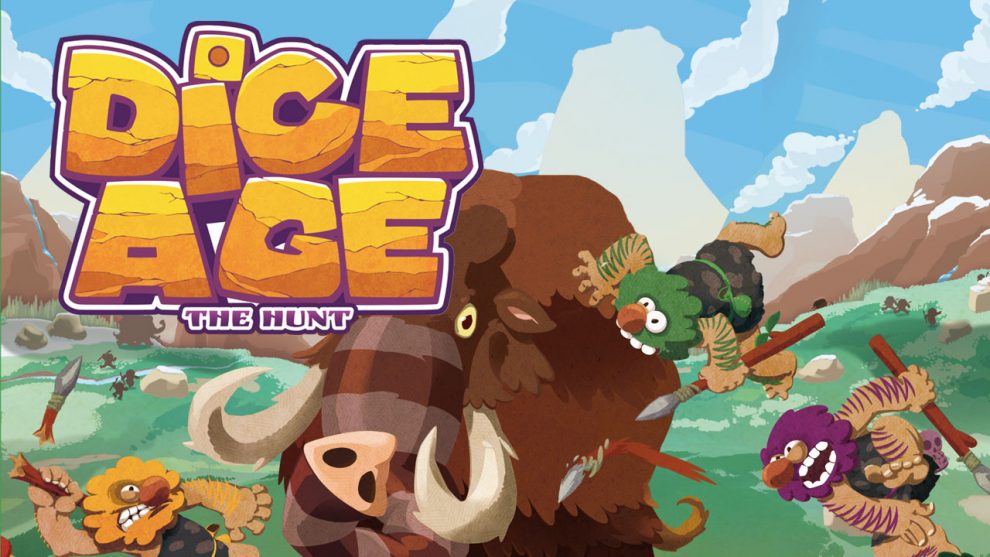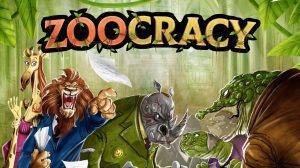Disclosure: Meeple Mountain received a free copy of this product in exchange for an honest, unbiased review. This review is not intended to be an endorsement.
Some time ago I stumbled across a review of a game called Dice Age: The Hunt from Hobby Japan. The reviewer initially likened it to Las Vegas, one of my favorite games of all time, which immediately drew my interest. As it turns out Dice Age is uncomfortably close in gameplay to Las Vegas, but as it also turns out it “fixes” a number of things that people complain about when playing Las Vegas. Is Dice Age: The Hunt something you should track down for your shelf? Let’s jump in and take a look.

Dice Age: The Hunt Overview
In Dice Age: The Hunt players act as competing tribes, each trying to hunt and gather the most Prey of five different types. They do this by rolling pools of dice, selecting all dice of a single number, and placing it on the hunting ground which matches the selected number. Players take turns doing this until all dice have been placed, at which time each hunting ground is evaluated for majority. The winning player gets the prize, while the losers all get sent to the “Extra Hunting Ground” where a final majority scoring is evaluated, with the winner of that one getting the Prey card for the Extra Hunting Ground. The game is played over four rounds, then final scores are tallied, and the player with the most points wins.
This Sounds Familiar…
If you’re a fan of Las Vegas then Dice Age: The Hunt might sound really familiar. In fact, Dice Age’s game play is nearly identical to Las Vegas. But there are a few important things that are worth pointing out and it’s those differences that make Dice Age a more interesting and tactical game.
The Devil’s in the Details
The setting for Las Vegas is of course Sin City, the land of casinos aplenty. Players roll pools of dice, place them into casinos matching the number they selected; the goal being to acquire a majority of the dice on that casino and, in doing so, earn a cash card of between $10,000 and $90,000 (up to $100,000 with the hard to find Boulevard expansion or the Las Vegas Royale reprint). Ties on any casino are immediately removed from the board before majority is evaluated. Players repeat this process for four rounds, then tally up their scores to determine the winner.

Las Vegas is a wonderful game, one I’ve played dozens of times, and will continue to play for a number of reasons: it’s easy to teach, it’s very easy to understand, and it’s relatively inexpensive. And yet, the very reasons that make it appealing to a large audience are the things that can sometimes cause it to fall flat for “gamers”; people who prefer strategy and tactics to outright luck. If you’re one of those people, then continue reading!
Dice Age: The Hunt Gameplay
In Dice Age, as previously mentioned, players are attempting to collect Prey cards from hunting grounds numbered one through six (and the extra hunting ground). Each Prey card ranges in value from 10 to 50 points and will be worth both their face value at the end of the game, as well as offering a set collection bonus. For example, the 10 point berry cards aren’t worth much alone, but collect a majority of them and you’ll net an extra 200 points at game’s end.
Players each start the game with 5 dice (one normal sized, and 4 smaller sized) with which to gather food for their tribe. Small dice count as 1 for area majority, while large dice count as 1.5. Players may be able to earn additional dice by drafting Generation cards which are selected at the end of each round, called a Generation. These Generation cards provide a number of different bonuses such as earning more dice, upgrading small dice to large dice, collecting seashells (immediate bonus points), earning single use Action Tiles with special powers, and even giving valuable end game scoring conditions. Generation cards are selected in order of when players place their final die.
After the fourth round is completed players tally their scores on the opposite side of the game board, which features a nifty scoring track. Players earn face value points for Prey cards, determine the majority bonus for Prey cards 10-40, earn points for seashells, and finally evaluate any end game bonuses they’ve selected.
The winner of the game is the one with the most points.
Final Thoughts
Dice Age: The Hunt is a beautiful ripoff of Las Vegas. The former was released in 2017, five years after the Spiel des Jahres nominated Las Vegas. But that doesn’t mean Dice Age should be immediately dismissed. It provides several tweaks to Las Vegas that are quite elegant and tactical.
The Dice – In Las Vegas players start with 8 dice, all of the same value, which they have for the entirety of the game. Dice Age begins players with only 5 dice, but gives them the ability, through clever tactics, to earn more dice or to make their existing dice more valuable.

Ties for Majority – In Las Vegas when two or more players are tied their dice come off the casino, as if they were never there. In Dice Age ties are won by the player furthest away from the hunting ground. While I’m not sure that makes thematic sense, it does mean that you’re making tactical choices about where to place your dice.

Losers of Majority Scoring – In Las Vegas the player with the majority wins the most valuable card, but second and third place might have the chance to also win something if there are two or more cards at that casino. In Dice Age there’s only a single Prey card per hunting ground, but the bonus hunting ground also has its own card. The losers of every hunting ground are placed in order on the extra hunting ground, a final majority is determined (including ties), and the winner receives the card in that slot. There have been plenty of times where I wanted to lose enough other hunting grounds because I needed the card there. Isn’t that a kicker?
Generation Cards – In Las Vegas, if you’re the first one to place your final die you might be waiting a few minutes for the rest of the players to catch up. But Dice Age rewards you for going out first by giving you first pick of the Generation cards laid out before you. Players select one column containing two cards and immediately earn the benefits.
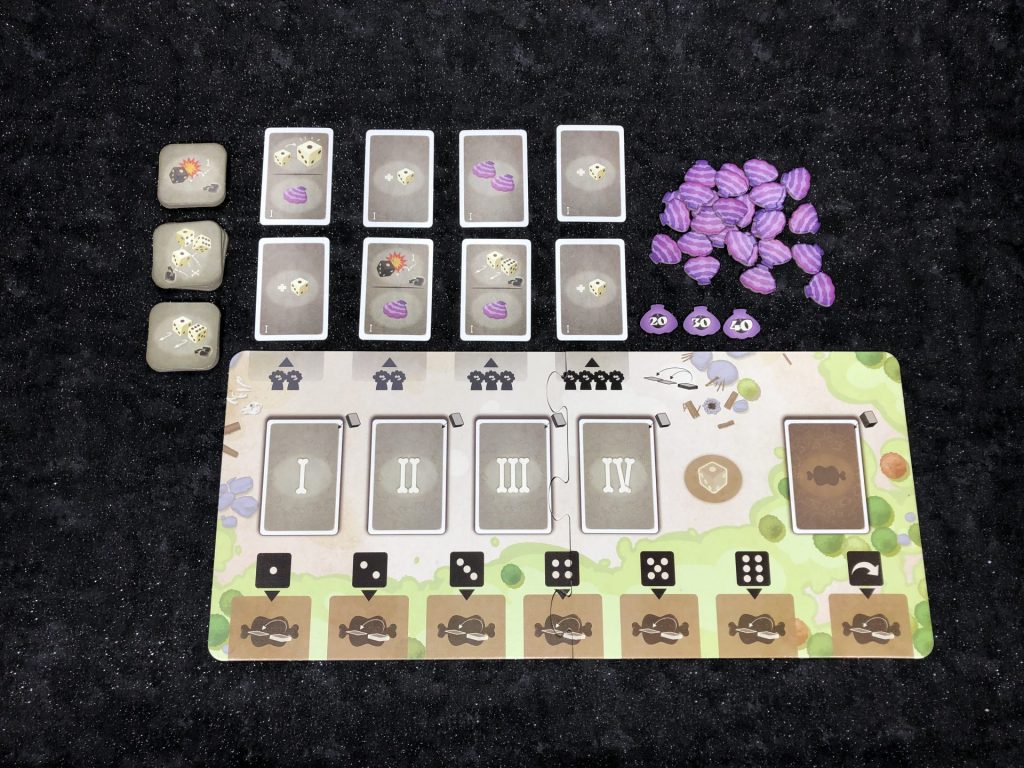
Action Tile Abilities – In Las Vegas players have no way to interact with the dice of other players. While this might be thematic in that game, in Dice Age the hunters can definitely take steps. The Action Tiles in Dice Age provide a one time chance to reroll any of your dice, remove a single die of another player from any hunting ground, or pull two of your dice from any hunting ground back into your active dice pool.
Majority Prey Card Scoring – In Las Vegas money is money; you add it up and that’s it. In Dice Age you’ve got to be a bit more tactical about which Prey cards you acquire. Sure the mammoth cards are each worth 50 points, but they don’t provide any majority bonuses. And while the berry cards give a majority bonus of 200 points, you may also have to earn up to 4 of them to get that bonus. It’s nice because the decisions about which cards to pick have more weight than just “take the highest point value”.
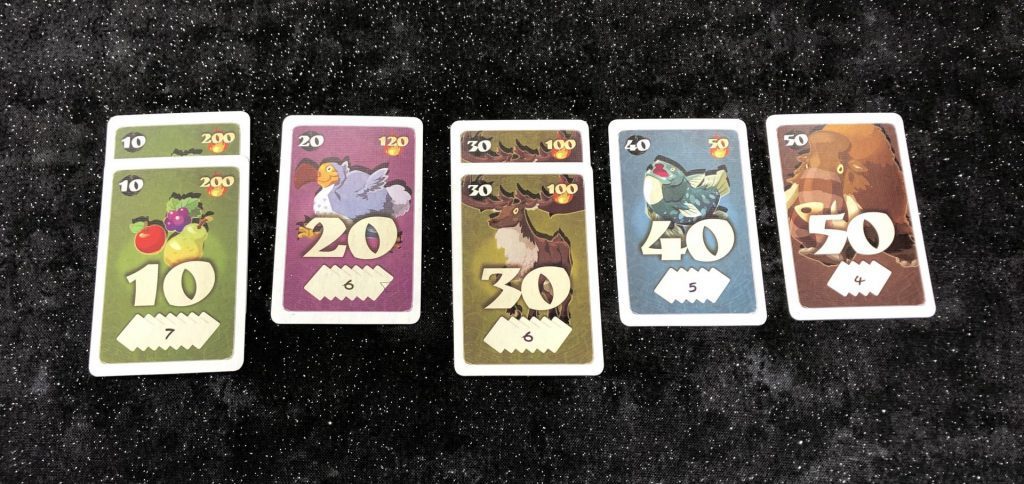
End Game Scoring Bonuses – Las Vegas has no end game scoring, other than adding up your money. In Dice Age, there are 6 main types of bonuses which range from giving you bonus points for large or small dice, seashells collected, unspent Action Tiles, and even earning the most majorities on Prey cards…how meta.
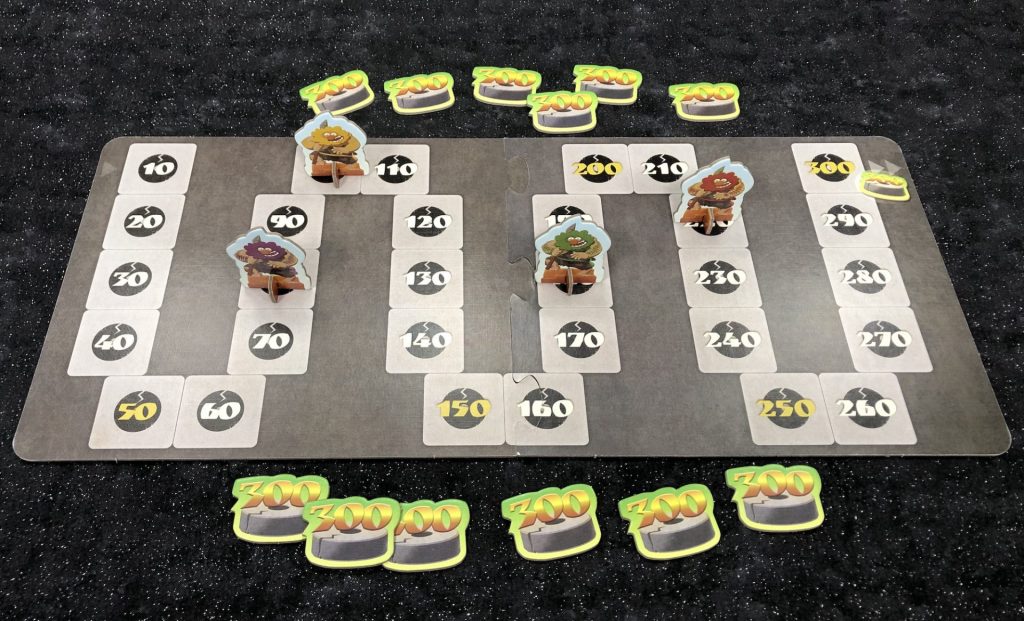
Dice Age: The Hunt really is a great game…it should be, it’s based on Las Vegas. But it’s also more than that. It has great artwork (with a sort of Asterix and Obelisk vibe), the components are better than Las Vegas (it has a built in dice tray for goodness’ sake), and it’s just fun to play. So, if Las Vegas has lost its luster then consider Dice Age: The Hunt…if you can get your hands on it that is. It is an import game from Japan after all.


